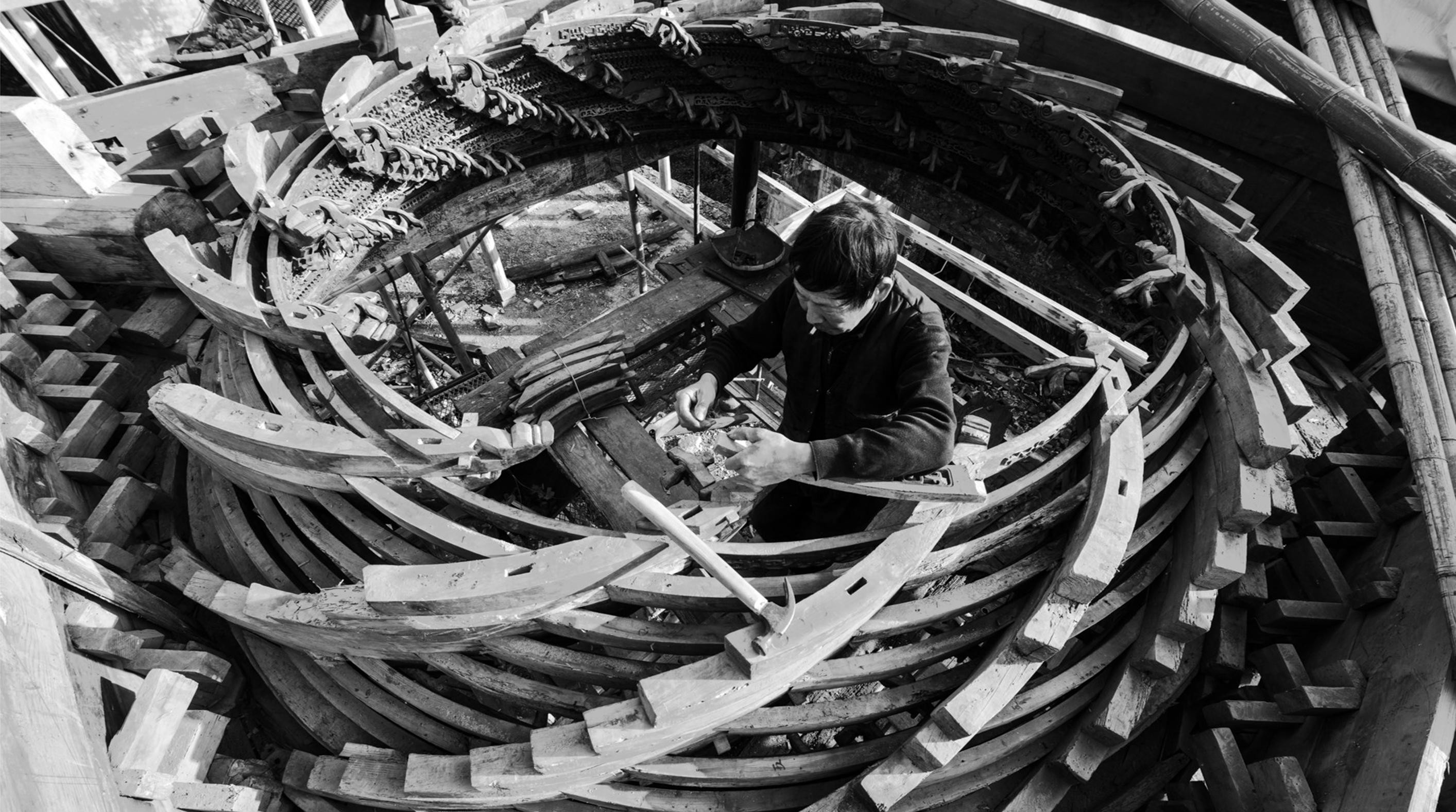New Insights on Ancient Chinese Spiral Domes

© 2019 EPFL
The Structural Xploration Lab at the Sixth Annual Conference of the Construction History Society, Cambridge, UK, April 5-7, 2019
The Structural Xploration Lab is attending the Sixth Annual Conference, in Queens’ College, Cambridge this April 5-7, 2019. Its paper, authored by Jingxian Ye and Corentin Fivet, brings lights on a little-known wooden construction typology in China - the spiral zaojings. In the paper, the relevant construction technology of the local field practice is discussed by looking at its variations, geometric generation, structure and restoration. This is the first time that the spiral wooden dome is discussed from a construction aspect.
Abstract:
The zaojing is an ancient architectural element that is widely found in various public buildings, such as temples, pagodas, palaces, and theatres. It is a richly decorated sunken ‘dome’ with a round top and a square bottom set into the ceiling and assembled from a large set of pieces using purely interlocking wood connections. In ancient times, the secular activities, like festivals, gatherings and celebrations, were always closely related to religious worship. They consequently formed the most important public place in the area. In these ancient opera stages, zaojings were frequently employed for their structural, aesthetic and acoustic properties. Despite their unique qualities, zaojings are poorly documented. This paper is based on a field research into existing opera wooden domes in Shanxi province (north) and Zhejiang province (south), which has revealed at least six types of Zaojings. This study concentrates on the spiral wooden dome, its typology, its construction process and its restoration.

